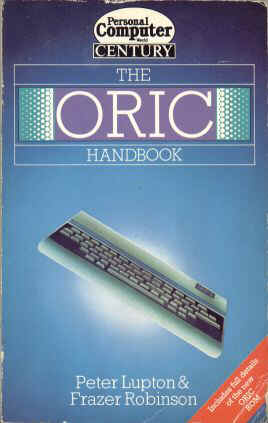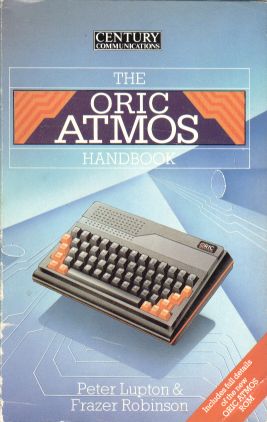BOOK REVIEW #1
![]()
The Oric Handbook & The Oric Atmos Handbook
by Peter Lupton and Fraser Robinson
 |
INTRO. This is one of several looks at books, (oo
a rhyme). Most are Oric specific, but I hope to have a look at a few
that were not machine specific, but did mention the Oric. It builds up to more and more complicated things, so that it guides you easily through how to program BASIC. With a somewhat school-book feel, it gives a summary of what was covered in a chapter and what you should have leamt. Quite handy for beginners, but the more experienced might find it a bit irritating ! But then this book is aimed mainly at beginners, being essentially like the manual. THE BOOK. This one is by Peter Lupton and Frazer Robinson who also wrote similar books for the Commodore 64 and Atari XL. The first book covers both Oric-1 and Atmos ROMs and shows the difference where applicable. The second book is exactly the same in fact. the rename presumably to target the new Atmos owners who might think the first handbook is only for the Oric-1. WHAT’S IN IT? Well, there’s 17 chapters and 11 appendices plus an introduction and an index. I was going to list them all but there are probably too many, so in brief; the beginning is the simple stuff of how to set your Oric up and how computers work showing how you can get the Oric to do sums (PRINT 2+2). |
| The book describes potential problems, like using
FR FRUIT and FRIEDEGG as variables. (The computer recognises the first
two letters, so those three appear to be the same to the Oric, doh! ) I also shows some nice programming techniques, like how to indent your programs to make them easier to see what’s happening. The chapter on loading and saving programs details how to save screens, both HIRES and TEXT/LORES. Whilst the advanced programming has information about debugging programs with a nice program that uses the TRON command. Example programs are quite good with the graphics demo showing you how to draw an Oric-1. (Something they perhaps should have changed for the Atmos Handbook !) An address book, sketch pad and a mastermind programs are featured amongst other useful little bit demonstrations, like the dice throwing routine. |
|
| APPENDICES. These are quite good, and certainly useful. The
first details the BASIC commands listing what syntax is required.
Perhaps a little easier to understand than the Oric manual. Errors are
next ! The Oric wasn’t the best computer when it came to giving error
messages. Most users aren’t too hot on understanding the error messages
it does give. This is quite a good section showing what commands are
likely to give certain errors. Next you get the usual lists of codes; ASCII, control codes, attributes screen memory maps. We have a part about music too. I’ve found this useful myself at times. It just has the right bits of information that you will need. But then we get to an interesting section on how to speed your programs up ! Some useful good advice, which pretty much sums up this book really. SUMMARY. I find this a useful book. A good choice if you have no Atmos manual. It is quite user friendly in that it makes an effort to explain things so people new to computers should understand it, rather than the approach of some which seems to expect you to know what programming is about, but just need the right syntax and such to make things clear. I like this one though it has a small machine code section. 8/10 |
 |
© Copyright 2000 by S.D.Marshall email me